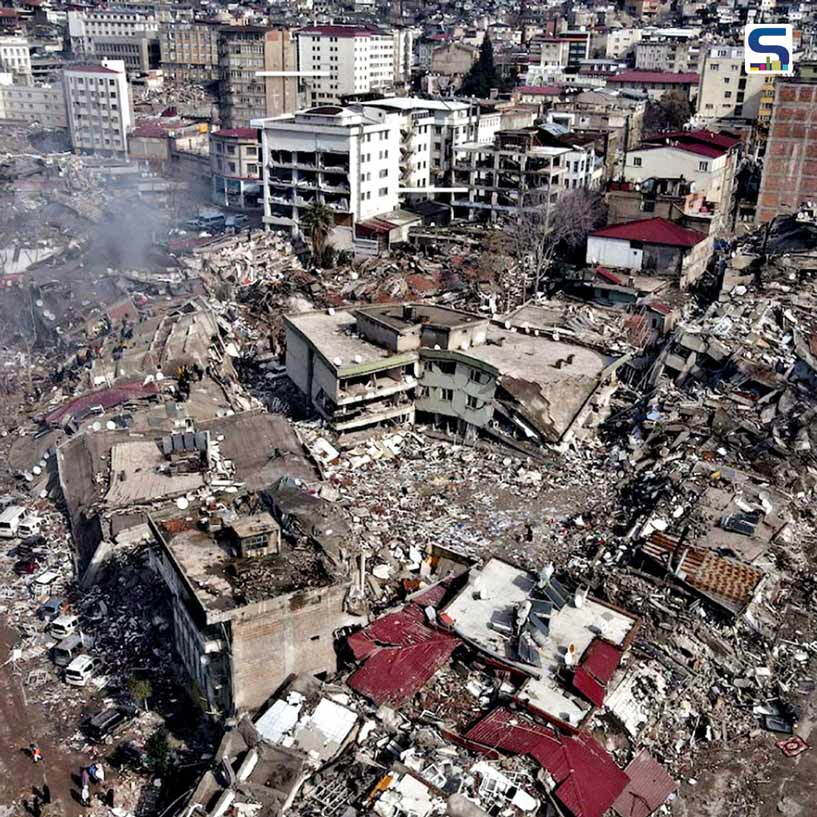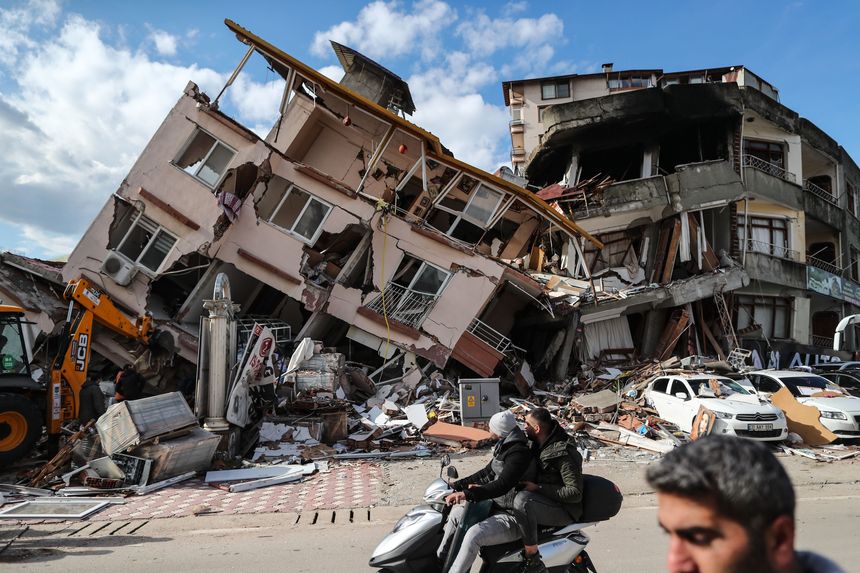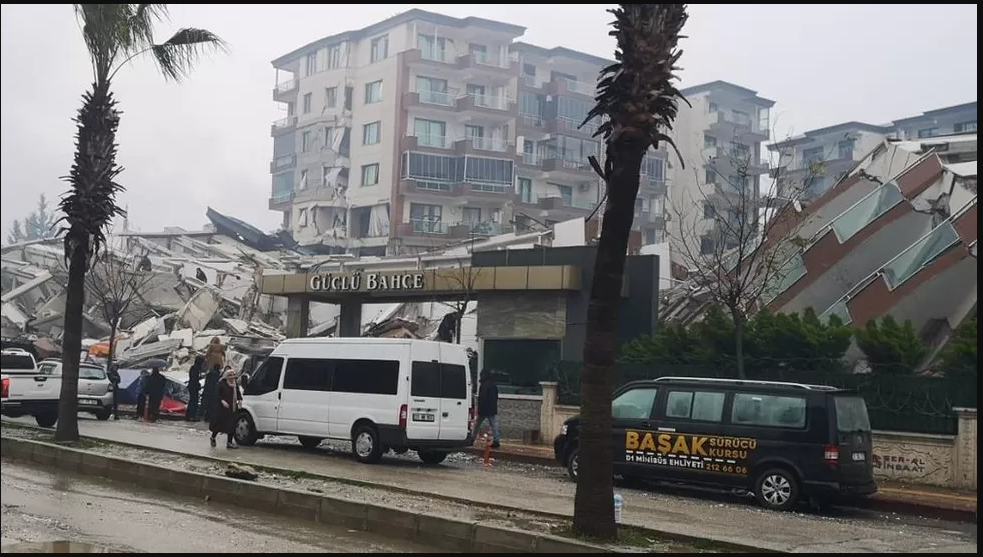
A pair of lethal earthquakes- measuring 7.8 and 7.5 on the magnitude scale -hit Turkey on February 6, leaving behind several collapsed buildings and thousands of dead people across a swathe of southern Turkey and northern Syria, However, the point is that not only the old ones but the recently built structures, that were advertised as earthquake-proof, got flattened in the quakes, which definitely puts a question on the compliance level of these buildings in the geologically weaker region. SURFACES REPORTER (SR) tries to find out whether it was simply the huge violence caused by an earthquake or a structural failure.
Reason for Earthquakes in Turkey
Turkey is an earthquake-prone country, which sits in a very seismically active region. The history of earthquakes in this country dates back at least 2,000 years, to a quake in 17 CE that collapsed hundreds of buildings.
The region has three tectonic plates underneath the Earth's surfaces that continuously grind against one another. These earthquakes are hosted by the East Anatolian Fault zone at the boundary between the Arabian and Anatolian tectonic plates, which slide past each other at around 6-10 mm per year. So, earthquakes are very common in this region. In spite of this known seismic danger, the country contains several weak infrastructures.
According to a report, around 48,000 people got died in the February 6 quakes and almost 1.2 lakh people have been injured. A team of scientists from Middle East Technical University, Ankara, and colleagues observed that the buildings in Gaziantep, Hatay, Kahramanmaras, and Adiyaman provinces, were subjected to seismic shocks larger than what the Turkish Earthquake Code (2018) design levels provided for. Nonetheless the unexpected nature of the earthquakes, buildings should have tolerated and not suffered collapses the way they did.'The international team released the 'Preliminary Reconnaissance Report', which indicates that the constructions done post-2002 could be supposed to bear any natural disasters better than the older buildings.
Building Code Violations and Poor Enforcement of Law
The preliminary findings of damage assessment of earthquakes reveal that the violations of the building code stipulations in the past two decades contributed to massive damage to infrastructure and countless deaths.
Though, more than 1,000 buildings that were collapsed or damaged during the earthquake were new buildings designed post-2000. The reason may be the violation of the building code which analyses the seismic risk of a building with respect to its geological location.
BBC mentioned three apartments that were constructed last year turned into a heap of rubble after the quake occurred. While their advert says the built structures were "completed in compliance with the latest earthquake regulations".
The report said, there is a significant change is believed to have occurred in Turkey between 1998 and 2001. A modern earthquake code was put into effect on September 2, 1998, post two destructive quakes occurred in 1999 in Kocaeli and Duzce.

Before and after: A newly built building in Iskenderun | Image Source: BBC
Strict construction regulations have been imposed following previous disasters, but the laws, comprising the most recent standards set in 2018, have been poorly enforced.
Inadequate Foundations
Bora Sezer, a structural earthquake engineer based in Istanbul, Türkiye, explained, "Inadequacies could also develop due to the presence of "soft stories," which are entrances or basements not having continuity of its walls with those of the upper storeys.
"The structures were poorly built. Normally, checks should be done during the construction of the structures," added Seda Torisu, a Turkish-origin geotechnical engineer, currently working in Japan.
"If there was no problem with the design of the structure, then problems happened during the application [or construction] of the design on site," Torisu, a survivor of the 1999 Izmit earthquake, told PTI in an email. The team assessed the performance of all kinds of infrastructure such as residential structures, bridges, tunnels, coastal structures and historic structures.
Pancake Collapses
The team of experts also observed that the inadequate foundations, as a matter of fact, were also the reason for the "pancake" collapses of multiple buildings.
Pancake collapse occurs frequently after major earthquakes and is referred to as a type of structural collapse which often starts at the bottom. In this type of collapse, a load-bearing element is damaged, usually, the building’s upper floors collapse vertically into the lower floors of the building.
 Multiple buildings collapsed in Turkey | Image Source: Wall Street Journal
Multiple buildings collapsed in Turkey | Image Source: Wall Street Journal
The report also outlines similar findings, which sectioned the building damage inventory in the county into two, anchored in their construction periods -- before and after 2002.
What does it mean by Earthquake-resistant Building?
An earthquake-prone building is designed in a way that it easily absorbs the impacts of quakes. In earthquake-prone areas, it is ensured that the building is properly grounded and connected through its base to the earth. The earthquake-resistant structures require a base and the foundation includes a high-quality reinforced concrete foundation slab with steel criss-cross strips. While the columns and beams must be evenly distributed to efficiently bear the earthquakes.
But many of the collapsed structures in Turkey seem to have been built from concrete without sufficient seismic reinforcement. The seismic building codes in this area suggest these blocks should be able to bear strong earthquakes (where the earth accelerates by 30% to 40% of the normal gravity), whereas these buildings could not even bear the shaking 20 to 50% of gravity, which is lower than the design code.
Sezer, who is working with professors who revised The Turkiye Earthquake Code 2007 and 2018 explained, "When we compare the pre-1998 earthquake regulation with today's regulations and construction methods, there are serious changes made in terms of regulation acceptances, material quality and application details in construction methods.

The Guclu Bahce complex in Antakya collapsed badly in the earthquakes | Image Source: BBC
"For these reasons, we expect more damage to structures built before 2000," Sezer told PTI in an email.
Is Reconstruction A Solution?
Turkish authorities were aware of the fact that a large number of buildings are required to be reconstructed to resist any quakes. Though most of the buildings were already built and could not be retrofitted as it could be very expensive or could not be preferred owing to socio-economic challenges.
However, now the authorities have an opportunity to rebuild the structures more safely. Though after a number of environmental effects that these quakes have caused, including landslides, ruptured ground surfaces, and liquefied soil, the authorities need to review the sites first to check where what can be built to lower any chances of destructions and losses in future.
Though the point is that will we see sturdier, earthquake-resistant buildings in future or more of the same?
Source: BBC, Rediff.com, The Hindu
Keep reading SURFACES REPORTER for more news stories.
Join us in SOCIAL MEDIA to stay updated
SR FACEBOOK | SR LINKEDIN | SR INSTAGRAM | SR YOUTUBE | SR TWITTER
Further, Subscribe to our magazine | Sign Up for the FREE Surfaces Reporter Magazine Newsletter